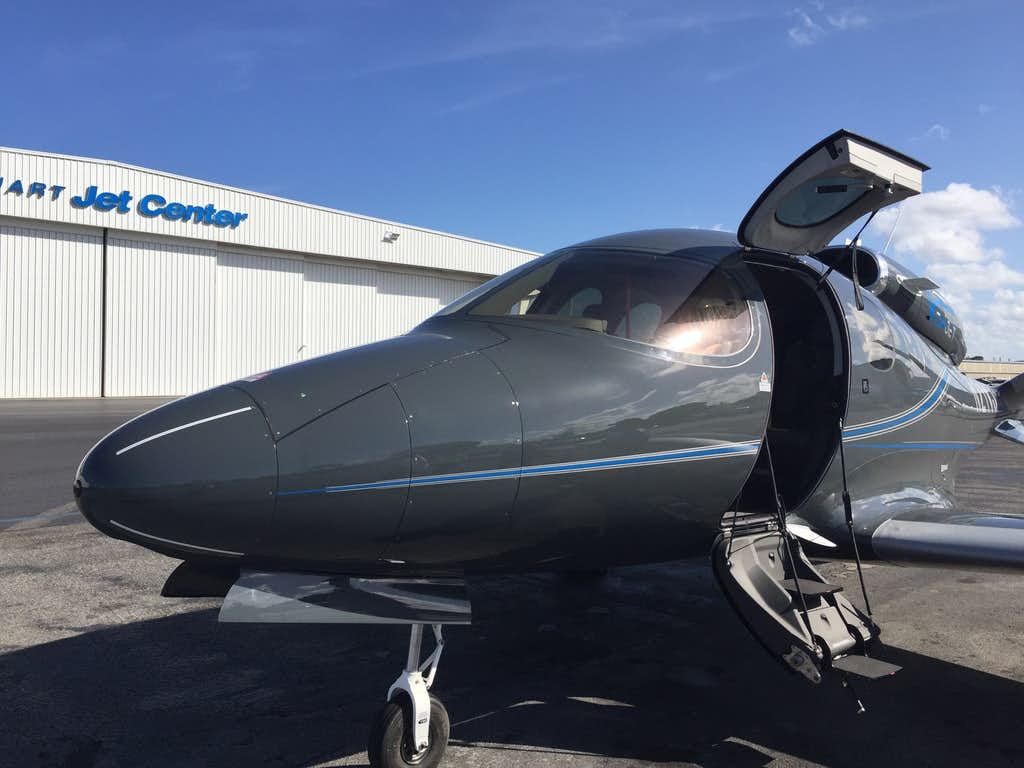
New jet card options and medical flights are part of Verijet’s plans to rebuild its fleet after more than a year of turbulence.

As Verijet seeks to rebuild operations amid legal battles and several failed attempts to raise money, its Founder and CEO Richard Kane says it is addressing financial concerns via a jet card that protects deposits until the customer flies and another that pays 16% in interest on an annualized basis.
The fast-growing very light jet operator took off in 2020 and, by 2022, was the 30th-largest charter/fractional provider in the U.S.
By the end of 2023, it had moved to the 13th spot.
However, the company has been in flux over the past two years.
Founder and CEO Richard Kane briefly exited, only to return.
There was an attempt to go public via a SPAC merger, and promises of securing capital never materialized.
Lawsuits and counter-lawsuits have followed.
Jettly filed a lawsuit after not being reimbursed for flights Verijet canceled.
Its fleet has dwindled from a peak of around 20 Cirrus SF50 Vision Jets to its current six, of which three are flying.
Now, Verijet hopes to get back to growth with new jet cards, a focus on medical flights, and the support of customers who want low prices.
According to a sales letter provided to Private Jet Card Comparisons, “The Protected Jet Card, the first of its kind to rival NetJets’ level of financial security at one-third of the cost, is backed by a Dual Control Account system managed by Morgan Stanley. This feature ensures unmatched financial protection, addressing concerns about stability and transparency in the industry. It also provides immediate tax benefits, making it a unique offering in private aviation.”
It continues, “This innovative product was inspired by one of our cardholders’ desire to purchase a large Verijet card with robust security assurances. By integrating this feedback, we aim to set new industry standards, particularly considering recent operator defaults and Verijet’s one-step forward, two-step-back growth pattern.”
Kane says, “On November 24, Verijet achieved an industry first: conducting a flight where payment was released only when passengers were onboard and en route to their destination. This milestone demonstrates our commitment to leveraging technology for greater transparency and accountability.”
He says he has been working on the new jet card since March.
That’s not it.
Verijet is also rolling out what it calls an Investment Grade jet card.
Unused hours are treated to a quarterly membership cash bonus of 4% of the remaining balance. However, funds from the IG card go into Verijet’s operating account.
Kane says he is getting a sympathetic ear from existing members.
Plans call for the operator to fly off the hours of existing jet card deposits, honoring those deposits.
He says there are currently about 60 customers owed around $10 million for prepaid flights.
“It’s important to point out that we are re-growing our fleet with an underpinning of executed joint ventures; we will concentrate on serving the Southeastern U.S. first and then
back to national,” he says.
Verijet is the second jet card provider this year, along with Volato, which couldn’t fulfill flights or provide refunds.
The HondaJet operator told its members in September it was exiting its flight provider business.
Both jet card programs were as-available.
Volato’s Insider program was presented as refundable.
Verijet’s jet card was non-refundable.
Verijet grew quickly from a 600 nautical mile zone from Orlando with fixed rate service areas in the Western U.S., Texas, and Northeastern U.S.
Initially, prices started at under $3,000 per hour.
Its attraction was cheap flights at a time when prices were increasing.
Currently, Verijet charges $4,800 per hour, plus FET at 25 hours, which goes down to $4,200, plus FET at 100 hours.
In an email sent to current customers this morning, Kane wrote, “We’re gradually expanding reliability and plan a return to national coverage after focusing on the Southeast. The West Coast remains a challenge but will improve significantly in 1Q25 with the aeromedical pivot placing jets in the region.”
He also said Verijet is pivoting in part to the aeromedical market.
Kane said the company now has a partnership with Buckeye Transplant Services, which operates 65 transplant centers in the U.S.
He also said there is an MOU with a family office representing First Nations in Canada to support medical flights to support indigenous rural populations.
“Collaborations with industry leaders such as RST Rural Health Care Alliance, Buckeye Transport Logistics, and Mercosur in South America strengthen our network,” Kane told customers.
“To meet the growing demand from these joint ventures, Verijet needs to onboard 30 aircraft. This will bring our fleet to 36 aircraft, eight in each U.S. region and four cross-border. These aircraft will be available for passenger transport when not operating life-saving missions. This doubling of aircraft revenue utilization ensures profitability, as does the recession-proof nature of aeromedical flying,” Kane wrote.
READ: Private jet provider financial stability – what you said
In a letter to jet card clients, Kane wrote, “To speak candidly, we share the same goal: rebuilding Verijet’s reliability while honoring obligations. It is far better for us to operate efficiently and fly off $4 million in operational costs over the next 18 months, following typical jet card utilization patterns, than to face refunds or litigation on $10 million in deposits. Investments directed toward fleet expansion and reliability improvements are more beneficial for everyone involved and are much easier to secure.”
Kane added, “We’ve made a deliberate decision to avoid partnering with investors whose first suggestion is to reorganize and not honor obligations. While this approach has extended the recovery process, it aligns with our values and commitment to you.”
In bankruptcy, jet card customers whose funds are not secured in an escrow account become unsecured credits.
READ: Is bankruptcy an option for jet card sellers and customers?
As part of the email, Kane said he is offering customers the opportunity to invest via purchasing SF50s on a sale-leaseback agreement.
According to the email, Verijet wants $21 million in deposits for 30 aircraft and $7.5 million for aircraft onboarding.
Kane says the additional aircraft will be both preowned and new, although the company doesn’t have a current order with the OEM.
The email also points to potential tax benefits for its new jet card program and fleet expansion.
Kane tells Private Jet Card Comparisons he plans to reach out and pay former employees who say they are owed unpaid wages.
“A letter will go out to anyone in that situation. We furloughed a lot of people, and it was ugly, and we need to bring back some people and take care of our obligations,” he says.
The company has also been facing several lawsuits, which he says he is working to settle.
READ: Jet It Lessons: What happens when your private jet provider fails?
Kane says the attraction of lower-priced private jet flights makes him confident he will receive support.
He could be right.
The lure of cheap private jet flights and unique jet card programs continues to attract customers.
While Wheels Up, Vista Global, and several other publicly traded flight providers have been in the spotlight for financial performance, savings can be significant.
Wheels Up, Vista’s XO, and FlyExclusive often price transcontinental flights $10,000 to $30,000 less each way than other providers.
Wheels Up, Jet AI, and Surf Air, like Verijet, attract flyers who are making short hops.
Their turboprops and VLJ options can save a couple of thousand dollars each way.
At the same time, VistaJet is one of the few jet card options with guaranteed rates and availability, short callouts, and cancelation terms for stand-up super midsize aircraft and intercontinental flights.
Kane says he hopes his two jet card options will bring transparency to the benefits and risks of memberships.
More than that, he says customers want what he’s selling.
“We can be up to one-third the price other jet cards charge for the same trip,” he says.
READ: What happens to your jet card and private jet membership deposits?